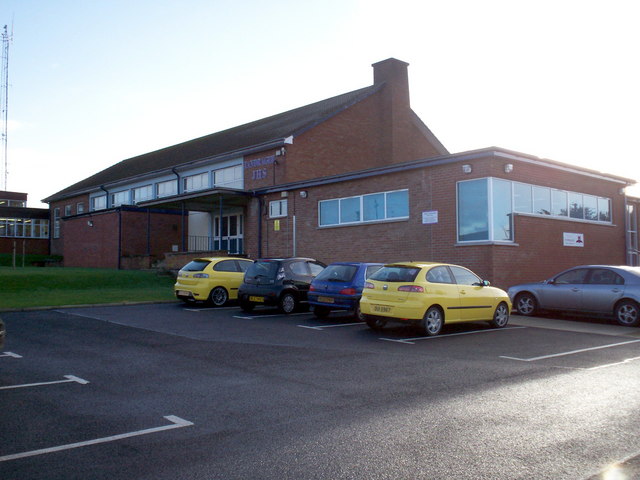|
Garvagh High School
Garvagh High School was a secondary school located in Garvagh, County Londonderry, Northern Ireland. It was a non-selective state maintained school for girls and boys aged from 11 to 16. It had 198 pupils and is within the North Eastern Education and Library Board Education in Northern Ireland differs from education systems elsewhere in the United Kingdom (although it is relatively similar to Wales), but is similar to the Republic of Ireland in sharing in the development of the ''national school'' syste ... area. On 1 October 2012, Education Minister John O’Dowd approved a development proposal to close Garvagh High School. This decision comes in light of a decline in enrollment in recent years. The school closed on 31 August 2013. References Secondary schools in County Londonderry {{NorthernIreland-school-stub ... [...More Info...] [...Related Items...] OR: [Wikipedia] [Google] [Baidu] |
Secondary Education
Secondary education or post-primary education covers two phases on the International Standard Classification of Education scale. Level 2 or lower secondary education (less commonly junior secondary education) is considered the second and final phase of basic education, and level 3 (upper) secondary education or senior secondary education is the stage before tertiary education. Every country aims to provide basic education, but the systems and terminology remain unique to them. Secondary education typically takes place after six years of primary education and is followed by higher education, vocational education or employment. In most countries secondary education is compulsory, at least until the age of 16. Children typically enter the lower secondary phase around age 12. Compulsory education sometimes extends to age 19. Since 1989, education has been seen as a basic human right for a child; Article 28, of the Convention on the Rights of the Child states that primary educatio ... [...More Info...] [...Related Items...] OR: [Wikipedia] [Google] [Baidu] |
Garvagh
Garvagh ( or ''Garbhachadh'' meaning "rough field") is a village in County Londonderry, Northern Ireland. It is on the banks of the Agivey River, south of Coleraine on the A29 route. In the 2001 Census it had a population of 1,288. It is situated within Causeway Coast and Glens district. History Garvagh was important from very early times, and later rebuilt as a Plantation town, as its broad main street and neatly planned buildings evidence. It was founded in the early 17th century by George Canning from Warwickshire, agent for the Ironmonger's Company of London, it was later grown into a middling-size market town by the Cannings. A striking feature of the town is the stone clock tower with an attractive clock and castellations, which dominates the main route through the town and also serves as the district cenotaph. On 26 July 1813 the Battle of Garvagh took place. The town has been immortalised in the famous Protestant folk-song " The Battle of Garvagh". The Troubles T ... [...More Info...] [...Related Items...] OR: [Wikipedia] [Google] [Baidu] |
County Londonderry
County Londonderry (Ulster-Scots: ''Coontie Lunnonderrie''), also known as County Derry ( ga, Contae Dhoire), is one of the six counties of Northern Ireland, one of the thirty two counties of Ireland and one of the nine counties of Ulster. Before the partition of Ireland, it was one of the counties of the Kingdom of Ireland from 1613 onward and then of the United Kingdom after the Acts of Union 1800. Adjoining the north-west shore of Lough Neagh, the county covers an area of and today has a population of about 247,132. Since 1972, the counties in Northern Ireland, including Londonderry, have no longer been used by the state as part of the local administration. Following further reforms in 2015, the area is now governed under three different districts; Derry and Strabane, Causeway Coast and Glens and Mid-Ulster. Despite no longer being used for local government and administrative purposes, it is sometimes used in a cultural context in All-Ireland sporting and cult ... [...More Info...] [...Related Items...] OR: [Wikipedia] [Google] [Baidu] |
Northern Ireland
Northern Ireland ( ga, Tuaisceart Éireann ; sco, label=Ulster-Scots, Norlin Airlann) is a part of the United Kingdom, situated in the north-east of the island of Ireland, that is variously described as a country, province or region. Northern Ireland shares an open border to the south and west with the Republic of Ireland. In 2021, its population was 1,903,100, making up about 27% of Ireland's population and about 3% of the UK's population. The Northern Ireland Assembly (colloquially referred to as Stormont after its location), established by the Northern Ireland Act 1998, holds responsibility for a range of devolved policy matters, while other areas are reserved for the UK Government. Northern Ireland cooperates with the Republic of Ireland in several areas. Northern Ireland was created in May 1921, when Ireland was partitioned by the Government of Ireland Act 1920, creating a devolved government for the six northeastern counties. As was intended, Northern Irela ... [...More Info...] [...Related Items...] OR: [Wikipedia] [Google] [Baidu] |
North Eastern Education And Library Board
Education in Northern Ireland differs from education systems elsewhere in the United Kingdom (although it is relatively similar to Wales), but is similar to the Republic of Ireland in sharing in the development of the ''national school'' system and serving a similar society with a relatively rural population. A child's age on 1 July determines the point of entry into the relevant stage of education in the region, whereas the relevant date in England and Wales is 1 September. Overview As with the island of Ireland as a whole, Northern Ireland has one of the youngest populations in Europe and, among the four UK nations, it has the highest proportion of children aged under 16 years (21% in mid-2019). In the most recent full academic year (2021-2022), the region's school education system comprised 1,124 schools (of all types) and around 346,000 pupils, including: * 796 primary schools with 172,000 pupils; * 192 post-primary schools with 152,000 pupils; * 126 non-grammar post-pr ... [...More Info...] [...Related Items...] OR: [Wikipedia] [Google] [Baidu] |


